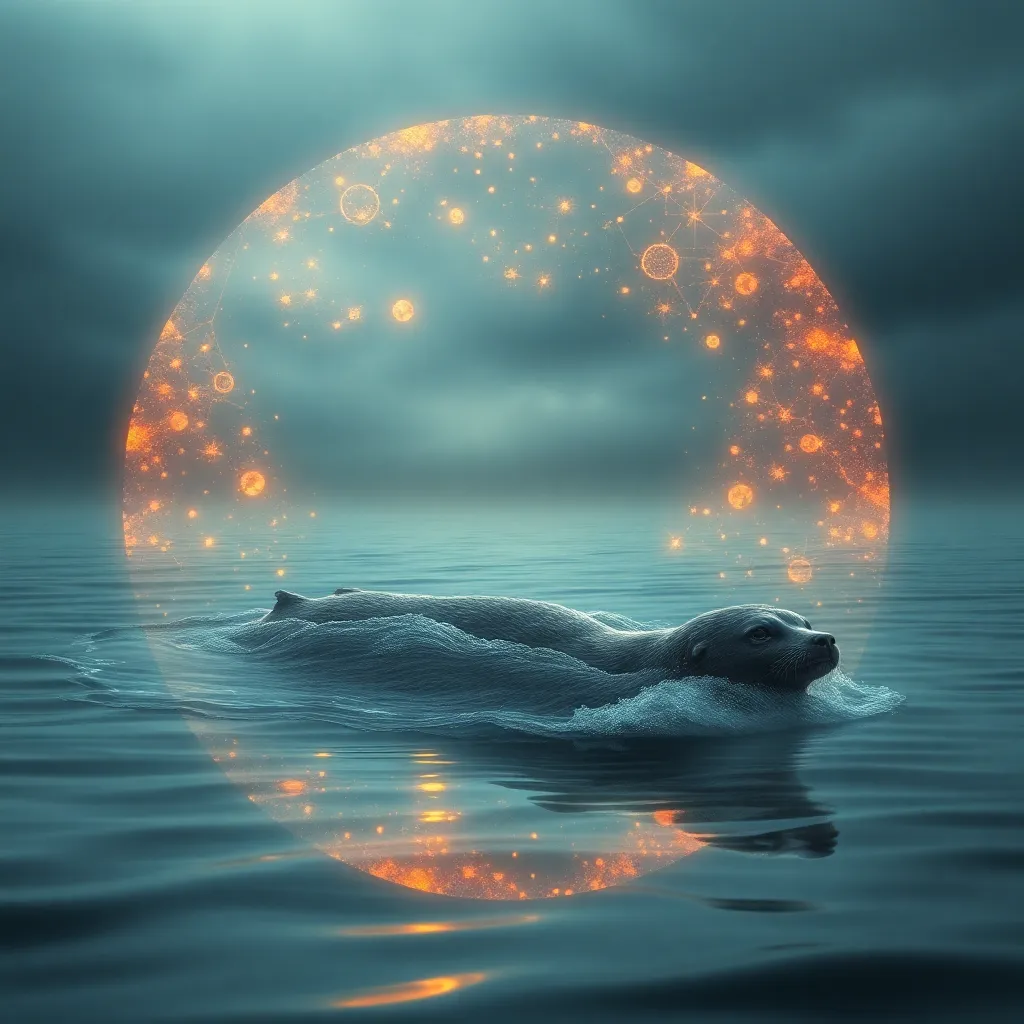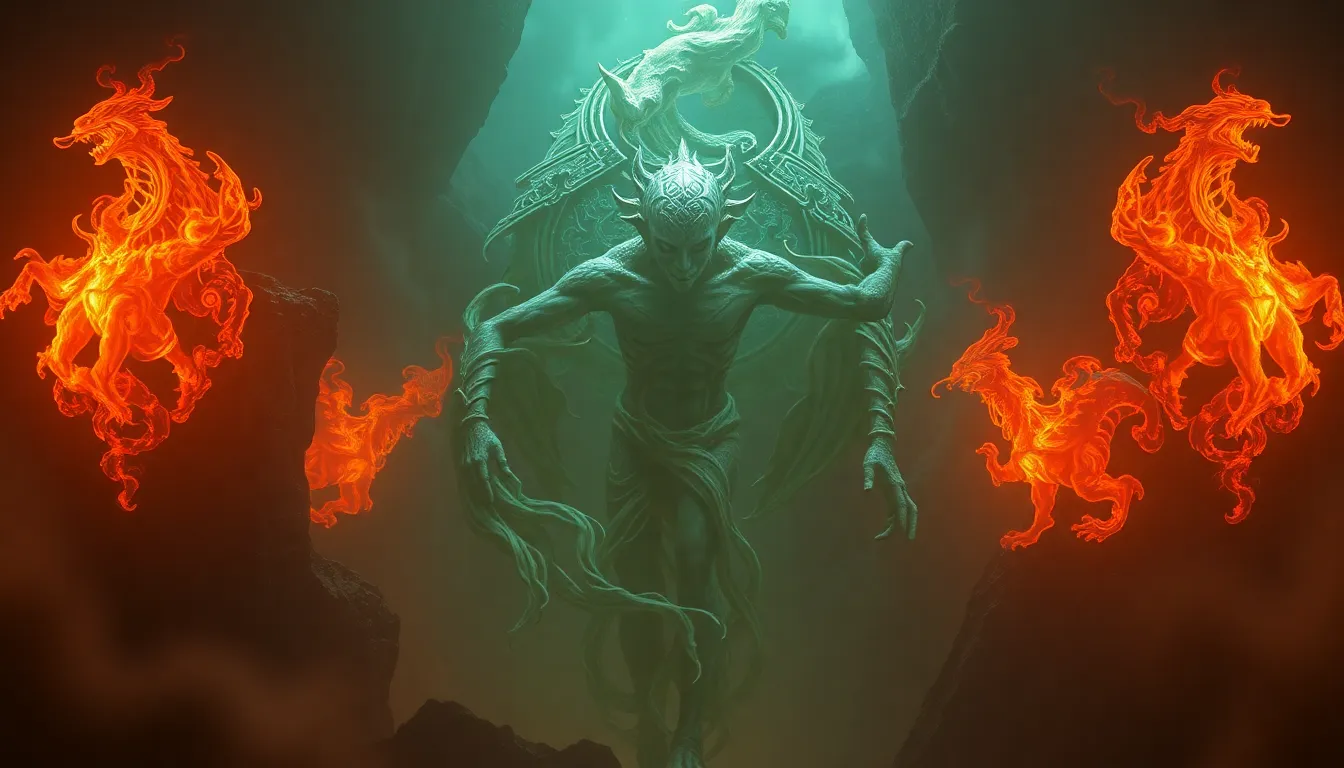Baltic Mythology: A Tapestry Woven with Nature
The Baltic region, encompassing countries like Lithuania, Latvia, and Estonia, is steeped in a rich tapestry of myths and legends. This mythology is deeply intertwined with nature, reflecting a reverence for the natural world and its powerful forces. The forests, in particular, hold a special place in Baltic mythology, serving as both a source of inspiration and a realm of supernatural beings. From ancient oaks whispering secrets to shimmering streams inhabited by spirits, the Baltic forest is a living, breathing entity teeming with mythical creatures.
Guardians of the Forest: The Role of Mythical Creatures
The Baltic forest is not just a place of beauty and tranquility; it is also a realm of magic and mystery, guarded by a diverse cast of mythical creatures. These beings, often imbued with supernatural powers, play a vital role in shaping the landscape, influencing human lives, and upholding the balance of nature. Some are benevolent, protecting the forest and its inhabitants; others are mischievous, playing tricks on humans or leading them astray.
One such creature is the laumė, a nature spirit associated with fertility and prosperity. She is often depicted as a beautiful woman adorned with flowers and greenery, residing in the forest and nurturing its growth. The velnias, on the other hand, is a trickster figure, often depicted as a horned and hairy demon. He is known for his mischievous pranks and his tendency to tempt humans with promises of wealth or power.
The Forest as a Sacred Space: Beliefs and Rituals
In Baltic mythology, the forest is seen as a sacred space, a place where the boundaries between the human world and the supernatural realm blur. Ancient oak trees, known as sacred oaks, are believed to be inhabited by spirits and serve as places of worship. People would leave offerings at these trees, seeking guidance and protection from the supernatural forces.
The forest was also a place for rituals and celebrations. The kūldievi, or fertility gods, were often worshipped in the forest, and offerings were made to ensure a bountiful harvest. The forest was a place of power and mystery, where humans sought connection to the divine and the forces of nature.
The Wild Hunt: An Eerie Presence in the Forest
The Wild Hunt, a terrifying phenomenon found in many cultures, is a prominent feature of Baltic mythology. This eerie procession, led by a supernatural hunter and accompanied by hounds and spectral riders, is believed to roam the forest at night, its presence heralding misfortune or death. The Wild Hunt is a reminder of the unpredictable and dangerous nature of the forest, a place where human beings are vulnerable to the forces beyond their control.
The Laima: Weaving Fate and Destiny
The Laima is a powerful goddess who holds sway over human destiny. She is depicted as a woman with a spindle and a loom, using these tools to weave the threads of life, shaping the fate of every individual. The Laima's role in the forest is significant, for it is believed that she often appears in the forest, where she can grant wishes or reveal secrets to those who are worthy. The forest is a place where humans can connect with the powers of fate and destiny, seeking guidance and understanding from the Laima.
The Dainas: Keepers of Songs and Wisdom
The Dainas, also known as the "keepers of songs," are powerful female figures who hold the wisdom and stories of the Baltic people. They are believed to be the guardians of ancient traditions, passing down knowledge through their songs, which are filled with tales of heroes, gods, and mythical creatures. These songs, often sung during rituals and celebrations, play a vital role in preserving Baltic history and culture. The Dainas are often associated with the forest, where they draw inspiration for their songs and where they embody the spirit of the natural world. Their songs echo through the trees, carrying with them the wisdom and knowledge of generations past.
The Jõgi: Spirits of Running Waters
In Baltic mythology, running water, especially rivers, is believed to be inhabited by spirits called Jõgi. These spirits are often depicted as beautiful beings, sometimes even with fish tails, who reside in the depths of rivers and streams. The Jõgi are believed to be guardians of the water, protecting it from harm and ensuring its purity. They are also associated with fertility and prosperity, as their presence brings life to the land around them.
The Jõgi are often depicted in stories and songs, their voices heard in the rushing water and their presence felt in the coolness of the stream. They are a reminder of the importance of water in Baltic mythology, and they represent the power and mystery of the natural world.
The Perkūnas: The God of Thunder and Storms
Perkūnas, the god of thunder and storms, is one of the most powerful deities in Baltic mythology. He is often depicted as a strong and imposing figure, wielding a hammer or an axe which he uses to create thunder and lightning. His storms are believed to be a sign of his power and a reminder of the forces of nature.
Perkūnas's domain is the sky, but he is also deeply connected to the forest since he controls the rain that nourishes trees. He is often seen as a protector of the forest, ensuring its vitality and ensuring the success of harvests. Perkūnas's association with storms and rain makes him a significant figure in Baltic mythology, reflecting the importance of weather and its influence on life.
The Velnias: The Trickster Figure
The Velnias, a mischievous trickster figure, represents the darker side of the forest. He is often depicted as a horned and hairy demon with a forked tail, a symbol of cunning and deceit. The Velnias is known for his pranks and temptations, often leading humans astray with promises of wealth and power. He is associated with darkness and chaos, and he is believed to reside in the forest, where he can influence the lives of humans.
But the Velnias is not simply a force of evil. He also represents the unpredictable and untamed aspects of nature, reminding humans that they are not the only beings in the forest.
Modern-Day Influence: Echoes of Myth in Baltic Culture
Baltic mythology continues to influence the culture of the region in many ways. It's visible in folk traditions, music, literature, art, and even everyday language. The names of places, like "Vilnius," the capital of Lithuania, are derived from mythical figures, demonstrating the importance of these stories in shaping the landscape and identity of the Baltic region.
The vibrant traditions of Baltic mythology, with its rich tapestry of mythical creatures and powerful deities, continue to inspire creativity and imagination in the 21st century.
FAQ
What is Baltic mythology?
Baltic mythology is a collection of myths, legends, and folklore that originated in the Baltic region, encompassing countries like Lithuania, Latvia, and Estonia.
What are some common themes in Baltic mythology?
Some common themes in Baltic mythology include the importance of nature, the balance of forces, the interconnectedness of humans and the supernatural, and the role of fate and destiny.
What are some examples of mythical creatures in Baltic mythology?
Examples of mythical creatures in Baltic mythology include the laumė (a nature spirit), the Velnias (a trickster), the Jõgi (water spirits), and the Dainas (keepers of songs).
Why is the forest important in Baltic mythology?
The forest is a significant element of Baltic mythology, serving as a sacred space, a source of inspiration, and a realm of supernatural beings.
How does Baltic mythology influence modern culture?
Baltic mythology continues to influence modern-day Baltic culture in areas such as folk traditions, music, literature, art, and language.



